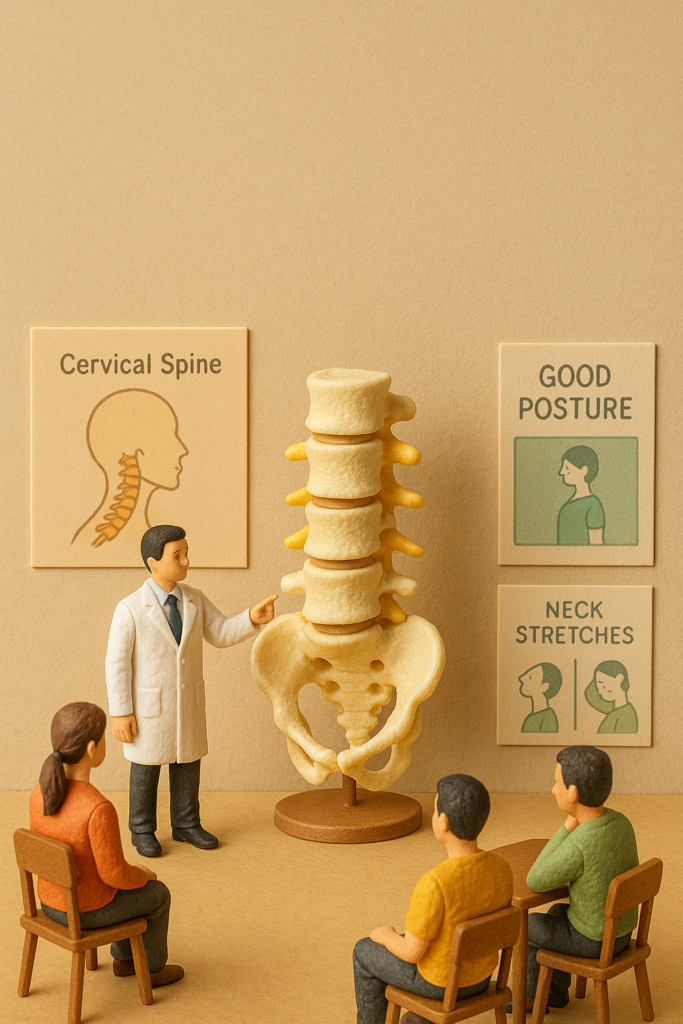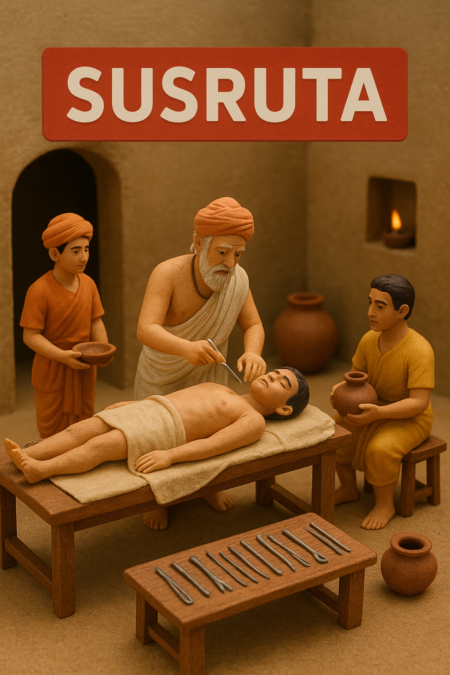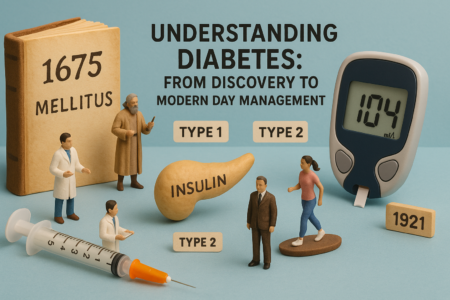Introduction – What is the Cervical Spine?
The cervical spine is the upper part of your backbone, located in the neck. It consists of seven small bones called cervical vertebrae, labeled C1 to C7. These bones are connected by joints, ligaments, and muscles, and are cushioned by soft discs. Together, they support the weight of your head, protect the spinal cord, and allow a wide range of neck movements.
The Discovery of the Cervical Spine
The cervical spine has been studied since ancient times. Early civilizations like the Egyptians and Greeks recognized the neck’s role in movement and injury. Hippocrates, the father of medicine, documented neck injuries and created simple traction devices for spinal problems. In the Renaissance period, anatomists like Andreas Vesalius used detailed dissections to study the vertebrae and nerves, leading to accurate diagrams of the cervical spine.
Modern imaging techniques like X-rays, MRI, and CT scans have now made it possible to see every detail of the cervical spine and diagnose problems more precisely.
Structure of the Cervical Spine
- C1 (Atlas) – Holds the skull and allows head nodding (“yes” motion).
- C2 (Axis) – Enables head rotation (“no” motion).
- C3 to C7 – Provide neck stability, flexibility, and nerve protection.
- Intervertebral Discs – Cushion-like pads between vertebrae that absorb shock and prevent bone friction.
Ligaments & Muscles – Keep the spine stable and assist movement.

Functions of the Cervical Spine
- Supports Head Weight – The human head weighs about 4.5–5 kg.
- Protects Nerve Pathways – Safeguards the spinal cord and nerve roots.
- Enables Movement – Allows bending, tilting, and rotation.
Maintains Posture – Keeps the head balanced over the body.
Treatment in Earlier Times vs. Now
Earlier Times:
- Herbal poultices, massage oils, and heat therapy.
- Simple traction using ropes or weights to stretch the neck.
- Manual realignment by traditional bone setters.
Modern Treatments:
- Physical Therapy – Exercises and stretches to restore mobility.
- Medications – Anti-inflammatory drugs for pain relief.
- Cervical Collar – Temporary support during recovery.
- Surgery – Disc replacement, decompression, or spinal fusion for severe cases.
- Minimally Invasive Procedures – Faster recovery and less pain.
Why Cervical Spine Problems Happen
- Poor Posture – Long hours looking at phones or computers.
- Injuries – Whiplash from accidents or sports injuries.
- Aging – Natural wear and tear (cervical spondylosis).
- Overuse – Repetitive movements straining the neck.
- Weak Muscles – Lack of physical activity.
Precautions Before and After Cervical Spine Disease
Before (Prevention):
- Keep your head and shoulders aligned while sitting or standing.
- Limit screen time and take frequent breaks.
- Exercise regularly to strengthen neck and shoulder muscles.
- Sleep on a supportive pillow to keep the neck neutral.
After (Recovery):
- Follow your doctor’s physiotherapy plan.
- Avoid lifting heavy objects or sudden neck movements.
- Continue posture correction habits.
Stay active with low-impact exercises like swimming or walking.
When to See a Doctor
Seek medical attention if you experience:
- Severe or persistent neck pain.
- Tingling, numbness, or weakness in arms or hands.
- Trouble balancing or moving the neck.
Conclusion
The cervical spine is one of the most vital parts of our body, ensuring movement, posture, and nerve protection. From ancient herbal remedies to advanced surgeries, our understanding of the neck has evolved greatly. By maintaining good posture, exercising regularly, and taking early precautions, we can keep our cervical spine healthy for life.







